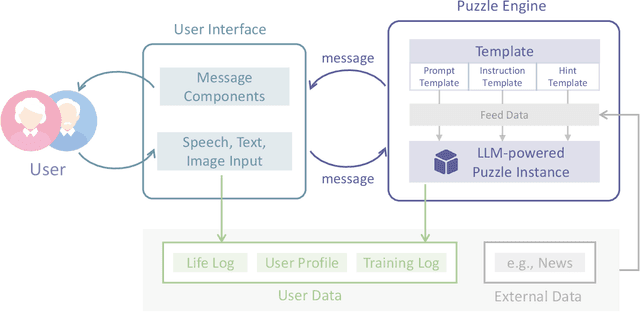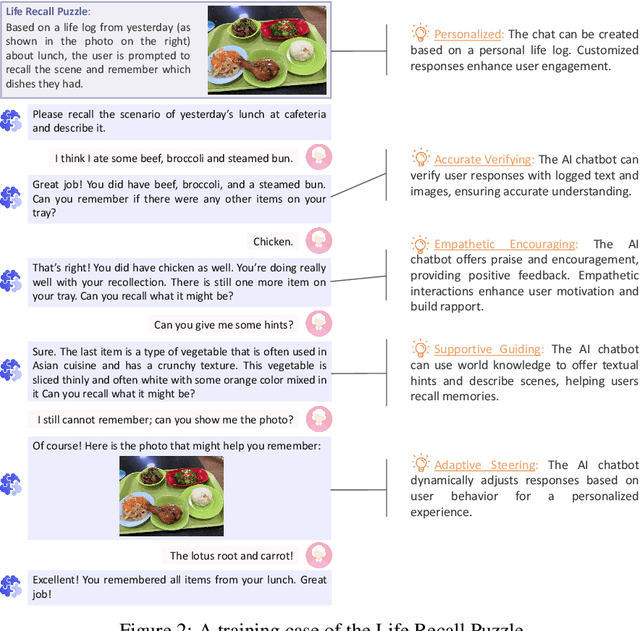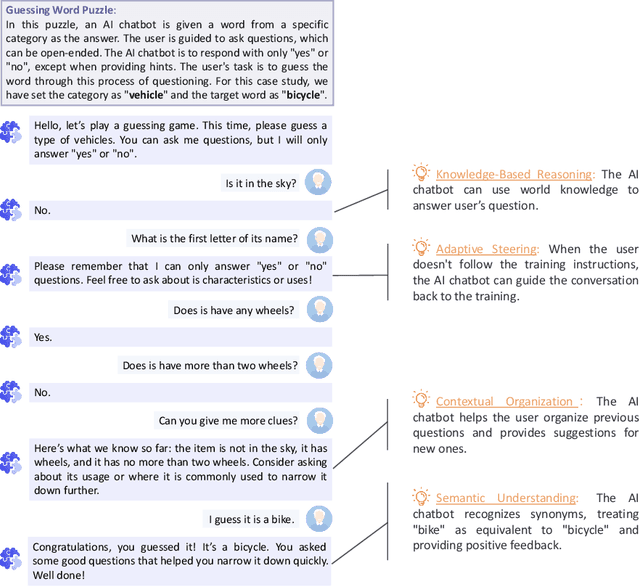Nan Chen
MaRS Laboratory, Dept. of Mechanical Engineering, The University of Hong Kong
LongAnimation: Long Animation Generation with Dynamic Global-Local Memory
Jul 02, 2025Abstract:Animation colorization is a crucial part of real animation industry production. Long animation colorization has high labor costs. Therefore, automated long animation colorization based on the video generation model has significant research value. Existing studies are limited to short-term colorization. These studies adopt a local paradigm, fusing overlapping features to achieve smooth transitions between local segments. However, the local paradigm neglects global information, failing to maintain long-term color consistency. In this study, we argue that ideal long-term color consistency can be achieved through a dynamic global-local paradigm, i.e., dynamically extracting global color-consistent features relevant to the current generation. Specifically, we propose LongAnimation, a novel framework, which mainly includes a SketchDiT, a Dynamic Global-Local Memory (DGLM), and a Color Consistency Reward. The SketchDiT captures hybrid reference features to support the DGLM module. The DGLM module employs a long video understanding model to dynamically compress global historical features and adaptively fuse them with the current generation features. To refine the color consistency, we introduce a Color Consistency Reward. During inference, we propose a color consistency fusion to smooth the video segment transition. Extensive experiments on both short-term (14 frames) and long-term (average 500 frames) animations show the effectiveness of LongAnimation in maintaining short-term and long-term color consistency for open-domain animation colorization task. The code can be found at https://cn-makers.github.io/long_animation_web/.
Assimilative Causal Inference
May 20, 2025Abstract:Causal inference determines cause-and-effect relationships between variables and has broad applications across disciplines. Traditional time-series methods often reveal causal links only in a time-averaged sense, while ensemble-based information transfer approaches detect the time evolution of short-term causal relationships but are typically limited to low-dimensional systems. In this paper, a new causal inference framework, called assimilative causal inference (ACI), is developed. Fundamentally different from the state-of-the-art methods, ACI uses a dynamical system and a single realization of a subset of the state variables to identify instantaneous causal relationships and the dynamic evolution of the associated causal influence range (CIR). Instead of quantifying how causes influence effects as done traditionally, ACI solves an inverse problem via Bayesian data assimilation, thus tracing causes backward from observed effects with an implicit Bayesian hypothesis. Causality is determined by assessing whether incorporating the information of the effect variables reduces the uncertainty in recovering the potential cause variables. ACI has several desirable features. First, it captures the dynamic interplay of variables, where their roles as causes and effects can shift repeatedly over time. Second, a mathematically justified objective criterion determines the CIR without empirical thresholds. Third, ACI is scalable to high-dimensional problems by leveraging computationally efficient Bayesian data assimilation techniques. Finally, ACI applies to short time series and incomplete datasets. Notably, ACI does not require observations of candidate causes, which is a key advantage since potential drivers are often unknown or unmeasured. The effectiveness of ACI is demonstrated by complex dynamical systems showcasing intermittency and extreme events.
HDGlyph: A Hierarchical Disentangled Glyph-Based Framework for Long-Tail Text Rendering in Diffusion Models
May 10, 2025Abstract:Visual text rendering, which aims to accurately integrate specified textual content within generated images, is critical for various applications such as commercial design. Despite recent advances, current methods struggle with long-tail text cases, particularly when handling unseen or small-sized text. In this work, we propose a novel Hierarchical Disentangled Glyph-Based framework (HDGlyph) that hierarchically decouples text generation from non-text visual synthesis, enabling joint optimization of both common and long-tail text rendering. At the training stage, HDGlyph disentangles pixel-level representations via the Multi-Linguistic GlyphNet and the Glyph-Aware Perceptual Loss, ensuring robust rendering even for unseen characters. At inference time, HDGlyph applies Noise-Disentangled Classifier-Free Guidance and Latent-Disentangled Two-Stage Rendering (LD-TSR) scheme, which refines both background and small-sized text. Extensive evaluations show our model consistently outperforms others, with 5.08% and 11.7% accuracy gains in English and Chinese text rendering while maintaining high image quality. It also excels in long-tail scenarios with strong accuracy and visual performance.
RL-DAUNCE: Reinforcement Learning-Driven Data Assimilation with Uncertainty-Aware Constrained Ensembles
May 08, 2025



Abstract:Machine learning has become a powerful tool for enhancing data assimilation. While supervised learning remains the standard method, reinforcement learning (RL) offers unique advantages through its sequential decision-making framework, which naturally fits the iterative nature of data assimilation by dynamically balancing model forecasts with observations. We develop RL-DAUNCE, a new RL-based method that enhances data assimilation with physical constraints through three key aspects. First, RL-DAUNCE inherits the computational efficiency of machine learning while it uniquely structures its agents to mirror ensemble members in conventional data assimilation methods. Second, RL-DAUNCE emphasizes uncertainty quantification by advancing multiple ensemble members, moving beyond simple mean-state optimization. Third, RL-DAUNCE's ensemble-as-agents design facilitates the enforcement of physical constraints during the assimilation process, which is crucial to improving the state estimation and subsequent forecasting. A primal-dual optimization strategy is developed to enforce constraints, which dynamically penalizes the reward function to ensure constraint satisfaction throughout the learning process. Also, state variable bounds are respected by constraining the RL action space. Together, these features ensure physical consistency without sacrificing efficiency. RL-DAUNCE is applied to the Madden-Julian Oscillation, an intermittent atmospheric phenomenon characterized by strongly non-Gaussian features and multiple physical constraints. RL-DAUNCE outperforms the standard ensemble Kalman filter (EnKF), which fails catastrophically due to the violation of physical constraints. Notably, RL-DAUNCE matches the performance of constrained EnKF, particularly in recovering intermittent signals, capturing extreme events, and quantifying uncertainties, while requiring substantially less computational effort.
D$^2$iT: Dynamic Diffusion Transformer for Accurate Image Generation
Apr 13, 2025Abstract:Diffusion models are widely recognized for their ability to generate high-fidelity images. Despite the excellent performance and scalability of the Diffusion Transformer (DiT) architecture, it applies fixed compression across different image regions during the diffusion process, disregarding the naturally varying information densities present in these regions. However, large compression leads to limited local realism, while small compression increases computational complexity and compromises global consistency, ultimately impacting the quality of generated images. To address these limitations, we propose dynamically compressing different image regions by recognizing the importance of different regions, and introduce a novel two-stage framework designed to enhance the effectiveness and efficiency of image generation: (1) Dynamic VAE (DVAE) at first stage employs a hierarchical encoder to encode different image regions at different downsampling rates, tailored to their specific information densities, thereby providing more accurate and natural latent codes for the diffusion process. (2) Dynamic Diffusion Transformer (D$^2$iT) at second stage generates images by predicting multi-grained noise, consisting of coarse-grained (less latent code in smooth regions) and fine-grained (more latent codes in detailed regions), through an novel combination of the Dynamic Grain Transformer and the Dynamic Content Transformer. The strategy of combining rough prediction of noise with detailed regions correction achieves a unification of global consistency and local realism. Comprehensive experiments on various generation tasks validate the effectiveness of our approach. Code will be released at https://github.com/jiawn-creator/Dynamic-DiT.
Digital Twin Buildings: 3D Modeling, GIS Integration, and Visual Descriptions Using Gaussian Splatting, ChatGPT/Deepseek, and Google Maps Platforms
Feb 09, 2025Abstract:Urban digital twins are virtual replicas of cities that use multi-source data and data analytics to optimize urban planning, infrastructure management, and decision-making. Towards this, we propose a framework focused on the single-building scale. By connecting to cloud mapping platforms such as Google Map Platforms APIs, by leveraging state-of-the-art multi-agent Large Language Models data analysis using ChatGPT(4o) and Deepseek-V3/R1, and by using our Gaussian Splatting-based mesh extraction pipeline, our Digital Twin Buildings framework can retrieve a building's 3D model, visual descriptions, and achieve cloud-based mapping integration with large language model-based data analytics using a building's address, postal code, or geographic coordinates.
CGKN: A Deep Learning Framework for Modeling Complex Dynamical Systems and Efficient Data Assimilation
Oct 26, 2024Abstract:Deep learning is widely used to predict complex dynamical systems in many scientific and engineering areas. However, the black-box nature of these deep learning models presents significant challenges for carrying out simultaneous data assimilation (DA), which is a crucial technique for state estimation, model identification, and reconstructing missing data. Integrating ensemble-based DA methods with nonlinear deep learning models is computationally expensive and may suffer from large sampling errors. To address these challenges, we introduce a deep learning framework designed to simultaneously provide accurate forecasts and efficient DA. It is named Conditional Gaussian Koopman Network (CGKN), which transforms general nonlinear systems into nonlinear neural differential equations with conditional Gaussian structures. CGKN aims to retain essential nonlinear components while applying systematic and minimal simplifications to facilitate the development of analytic formulae for nonlinear DA. This allows for seamless integration of DA performance into the deep learning training process, eliminating the need for empirical tuning as required in ensemble methods. CGKN compensates for structural simplifications by lifting the dimension of the system, which is motivated by Koopman theory. Nevertheless, CGKN exploits special nonlinear dynamics within the lifted space. This enables the model to capture extreme events and strong non-Gaussian features in joint and marginal distributions with appropriate uncertainty quantification. We demonstrate the effectiveness of CGKN for both prediction and DA on three strongly nonlinear and non-Gaussian turbulent systems: the projected stochastic Burgers--Sivashinsky equation, the Lorenz 96 system, and the El Ni\~no-Southern Oscillation. The results justify the robustness and computational efficiency of CGKN.
The Potential and Value of AI Chatbot in Personalized Cognitive Training
Oct 25, 2024


Abstract:In recent years, the rapid aging of the global population has led to an increase in cognitive disorders, such as Alzheimer's disease, presenting significant public health challenges. Although no effective treatments currently exist to reverse Alzheimer's, prevention and early intervention, including cognitive training, are critical. This report explores the potential of AI chatbots in enhancing personalized cognitive training. We introduce ReMe, a web-based framework designed to create AI chatbots that facilitate cognitive training research, specifically targeting episodic memory tasks derived from personal life logs. By leveraging large language models, ReMe provides enhanced user-friendly, interactive, and personalized training experiences. Case studies demonstrate ReMe's effectiveness in engaging users through life recall and open-ended language puzzles, highlighting its potential to improve cognitive training design. Despite promising results, further research is needed to validate training effectiveness through large-scale studies that include cognitive ability evaluations. Overall, ReMe offers a promising approach to personalized cognitive training, utilizing AI capabilities to meet the growing demand for non-pharmacological interventions in cognitive health, with future research aiming to expand its applications and efficacy.
CustomContrast: A Multilevel Contrastive Perspective For Subject-Driven Text-to-Image Customization
Sep 11, 2024



Abstract:Subject-driven text-to-image (T2I) customization has drawn significant interest in academia and industry. This task enables pre-trained models to generate novel images based on unique subjects. Existing studies adopt a self-reconstructive perspective, focusing on capturing all details of a single image, which will misconstrue the specific image's irrelevant attributes (e.g., view, pose, and background) as the subject intrinsic attributes. This misconstruction leads to both overfitting or underfitting of irrelevant and intrinsic attributes of the subject, i.e., these attributes are over-represented or under-represented simultaneously, causing a trade-off between similarity and controllability. In this study, we argue an ideal subject representation can be achieved by a cross-differential perspective, i.e., decoupling subject intrinsic attributes from irrelevant attributes via contrastive learning, which allows the model to focus more on intrinsic attributes through intra-consistency (features of the same subject are spatially closer) and inter-distinctiveness (features of different subjects have distinguished differences). Specifically, we propose CustomContrast, a novel framework, which includes a Multilevel Contrastive Learning (MCL) paradigm and a Multimodal Feature Injection (MFI) Encoder. The MCL paradigm is used to extract intrinsic features of subjects from high-level semantics to low-level appearance through crossmodal semantic contrastive learning and multiscale appearance contrastive learning. To facilitate contrastive learning, we introduce the MFI encoder to capture cross-modal representations. Extensive experiments show the effectiveness of CustomContrast in subject similarity and text controllability.
gFlora: a topology-aware method to discover functional co-response groups in soil microbial communities
Jul 04, 2024



Abstract:We aim to learn the functional co-response group: a group of taxa whose co-response effect (the representative characteristic of the group) associates well statistically with a functional variable. Different from the state-of-the-art method, we model the soil microbial community as an ecological co-occurrence network with the taxa as nodes (weighted by their abundance) and their relationships (a combination from both spatial and functional ecological aspects) as edges (weighted by the strength of the relationships). Then, we design a method called gFlora which notably uses graph convolution over this co-occurrence network to get the co-response effect of the group, such that the network topology is also considered in the discovery process. We evaluate gFlora on two real-world soil microbiome datasets (bacteria and nematodes) and compare it with the state-of-the-art method. gFlora outperforms this on all evaluation metrics, and discovers new functional evidence for taxa which were so far under-studied. We show that the graph convolution step is crucial to taxa with low abundance, and the discovered bacteria of different genera are distributed in the co-occurrence network but still tightly connected among themselves, demonstrating that topologically they fill different but collaborative functional roles in the ecological community.
 Add to Chrome
Add to Chrome Add to Firefox
Add to Firefox Add to Edge
Add to Edge